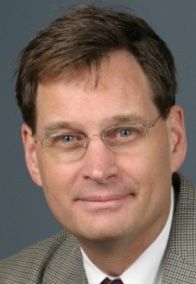Thoughts From Engineers: Down by the River: USGS Reports on Human Activity in U.S. Waterways

The endangered status of the Mississippi River skipjack herring may have initiated a few changes to this historic river’s routine management—but little more. This is just one fish in a vast and nuanced ecosystem. But whether discussing an obscure water mite in Black Earth Creek, Wis., or sockeye salmon on the pacific coast Columbia River, the scale and impact of human activity to the nation’s waterways, as documented by the U.S. Geological Survey (USGS), is worth review.
This 2019 report, “Flow Modification in the Nation’s Streams and Rivers,” (bit.ly/2QU77La) shows that land- and water-based activities altered the natural flow patterns of more than 7,000 streams and rivers across the United States. More than one-third—roughly 1.2 million miles of waterways—have been altered in ways linked to “impaired biological communities” that have lost a statistically significant number of species.
The USGS National Water Quality Assessment Project quantifies what many have suspected: that in our zeal to build and improve, humans have crushed and pillaged as well. The upshot of this grim news is that we’re able to appreciate the data, weigh options and take action to mitigate avoidable harm; we’ve already done so in some cases.
According to the nonprofit American Rivers, since the United States started to build dams, we have removed 1,578 of them—not just to avoid damage to property and protect human life, but for the express purpose of restoring the ecological health of specific river systems. The USGS report may not have the “bullet between the eyes” effect of Rachel Carson’s notable Silent Spring (1962) with its blunt commentary on the destructive and widespread use of pesticides, but as engineering professionals, the data presented in this USGS report raises the question: what can (or should) we do with this information?
What Makes a River?
USGS based its conclusions on nationwide stream- and river-flow modification by analyzing six different measures of streamflow. From flow magnitude to flow duration, frequency and variability, the authors combined data from 3,000 USGS stream gages with land-use data and machine-learning models to generate flow estimates for modified conditions as well as natural, unmodified conditions. The authors calculated differences between measured observations and estimated natural baselines for rivers across the country for each flow indicator between 1980 and 2014. These analyses shape the agency’s conclusions about the extent of river and stream modification by region and for the entire country.
Price of Progress: How Specific Industries Change Flow
The source of modified flows are from diverse land- and water-management activities that support growing populations and modern living: dams for hydroelectric energy and water storage; roads, bridges, and the impervious surface areas of urbanized spaces; and the infrastructure needed to support irrigated cropland.
Specific industries and activities affect stream and river flow in distinct ways, and the report analyzed the effects of reservoirs, urban areas, row crops and irrigated land on river flow. For example, urban areas are characterized by elevated flow magnitudes with greater frequencies—attributable to greater runoff and wastewater river discharges. Compare that to hydroelectric dams, which generate energy by managing water on an hourly basis to meet demand, consequently resulting in extreme flow fluctuations.
Although the report provides management-specific conclusions, it also includes broad findings relative to national trends. Analysis of climate change had much less of an impact on streamflow than land- and water-management activities.
Major Players on a Freshwater Stage
Streams in their natural condition are characterized by flow variability. Flow magnitude, duration of flows, frequency and variability (within the year and from year to year) all are important characteristics of rivers. The fish and invertebrates that make up a stream community have lifecycles that are in sync with a river’s flow patterns. When these flows suddenly change, species struggle to adapt.
The report shows that most land- and water-management activities significantly change flow dynamics. Variability is reduced within the system, and flow is standardized. Finally, the report states that river systems whose flows are most different from natural conditions are most likely to be biologically impaired.
The report notes experimental management strategies designed to replicate the flows that preceded dam construction and development. For example, following massive declines in salmon populations on the Trinity River in Northern California, managers redirected water used for irrigation back to ecosystem restoration. Also, adjustments were made to reservoir operations to reintroduce pre-development seasonal variability, such as periods of high flow during spring.
Another Factor in the Analysis
Many U.S. communities already are in a tight spot with respect to water supply. For a variety of reasons—whether due to degraded groundwater quality in the Midwest or unpredictable rainfall in the West—user conflicts over water resources are projected to increase. Water is one of the most-complex resources to manage, and it’s easy to grow cynical about the country’s track record and current trajectory. Even worse would be to wring our hands and do nothing.
However, the data presented by USGS represents needed and critical information. It’s yet another variable for engineers to work into the analysis, perhaps a bit like calibrating Manning’s roughness coefficients to match flow observations. The calculation is necessary, and the solution would be flawed without it.
Engineers are a resourceful lot and trained to think creatively. Here’s an opportunity for engineering professionals to learn more, provide context to other stakeholders and suggest alternatives to project design. In all honesty, we would be hard pressed to do much less, and the USGS just gave us our wake-up call.
About Chris Maeder
Chris Maeder, P.E., M.S., CFM, is engineering director at CivilGEO Inc.; email: [email protected].


